
AQUAWORLD AQUARIUM
Mediterranean Sea Life & Reptiles
Hersonissos - Crete - Greece

 |
AQUAWORLD AQUARIUMMediterranean Sea Life & Reptiles |
 |
| Founded 1995 | |
PLEASE HELP TO SAVE TURTLES - READ the Special Aquaworld Blog HERE - or SIGN the Petition HERE
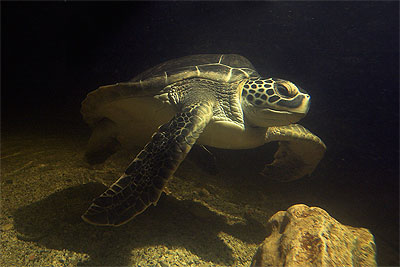
Stephania, a blind green turtle, has been with us since July 2000. She was deliberately blinded by children, and so now we must care for her and give her the best possible quality of life. Originally taken into care by The Sea Turtle Protection Society of Greece, she is a firm favourite for many who come to see her every year at Aquaworld.
Green turtles are found in Greek waters as they pass by on their way to nesting sites in Cyprus and Turkey. You can read more about Stephania and other sea turtles here.
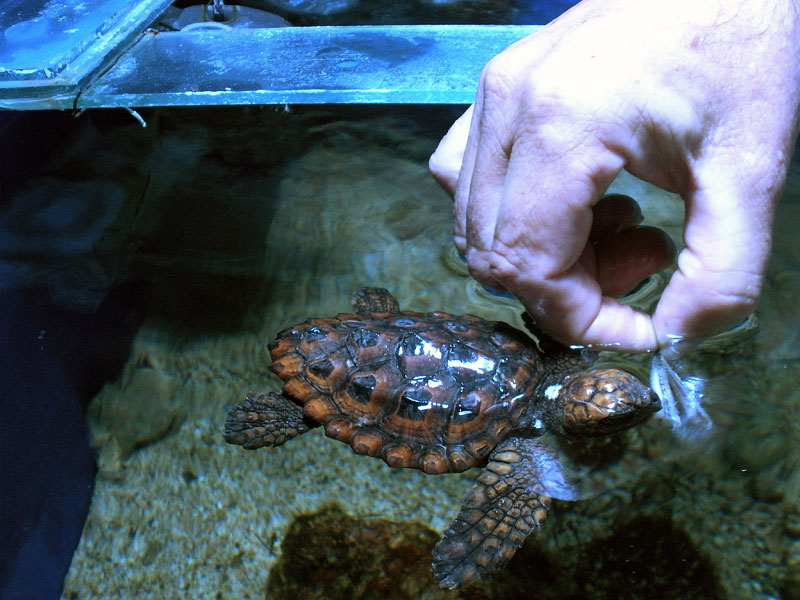
Like little Dimitris before him, young Georgos was found washed up next to the sea in Hersonissos. Two local children (both called Georgos) brought him to us in March 2009.
Georgos is barely over the size of a hatchling and would have been better advised to head off for warmer waters at the end of last summer - but he stayed and that was almost his undoing! As you can see from the photo, however, he began to eat the day after arriving at Aquaworld and with a bit more TLC should soon be going back into the sea to live a long and happy life...
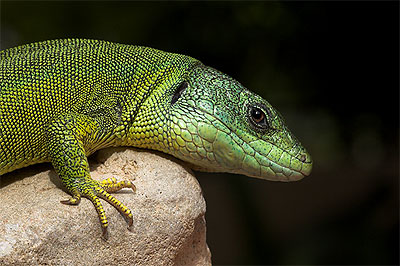
Dino, the Balkan green lizard, is also something of a star here at Aquaworld and has had his picture taken with thousands of visitors. He is so laid back that he doesn't even try to escape any more - he knows where his next grasshopper is coming from, for sure!
The Balkan green is the largest lizard native to Crete, but is normally quite timid and tends to run away at the slightest disturbance.
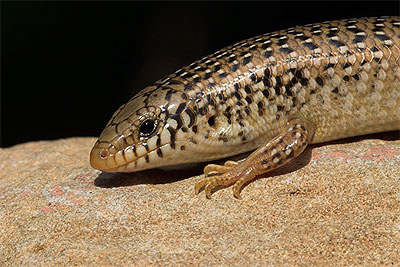
The ocellated skink is commonly seen basking in sunny areas during the daytime, but it is quick to scamper away in its rather serpentine fashion, often causing people to mistake it for a snake.
This skink has the unfortunate reputation of being deadly poisonous here on Crete. Of course, this is not the case at all and these rather shy little creatures are deserving of our care and protection - something we at Aquaworld do our best to point out to local folks.
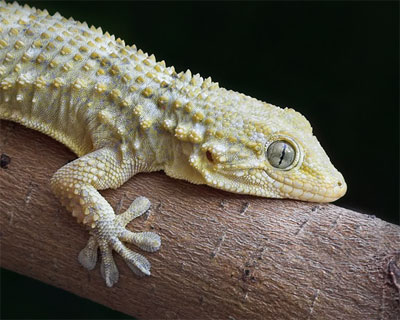
The Moorish and Turkish gecko are both regulars inside Cretan dwelling places. Don't be alarmed however if you find one on your bedroom ceiling - they are both expert catchers of flying insects.
Anything that catches and eats mosquitoes can't be all that bad, can it???
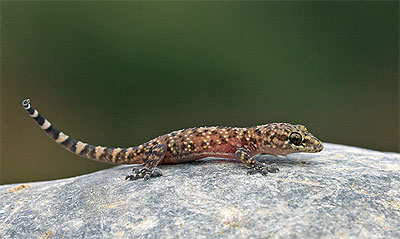
Generally darker in colour than its cousin above, the Turkish gecko adopts a very similar lifestyle.
If disturbed, both species will often drop their tails and run away. This seemingly rather gruesome practice is, in fact, a very useful defence mechanism. The discarded tail continues to twitch for a few moments and the gecko hopes the predator will accept it as a snack, leaving the wily little lizard to grow a new one in its place!
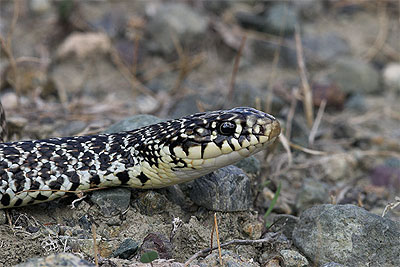
The Balkan whip snake, like all Cretan snakes, is totally harmless to human beings - although it may well bite if disturbed and afraid. It seems to prefer dry, rocky or stony areas where it can bask within easy reach of a bolt hole in case of trouble.
Whilst it can reach over a metre in length, most whip snakes are smaller than this. They live mainly on a diet of reptiles and small mammals, although they may also catch the odd fledgling bird from time to time.
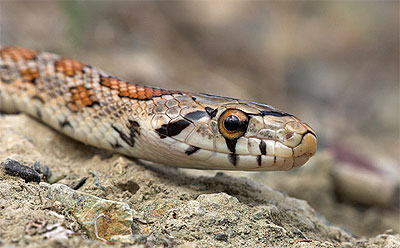
Said by many to be the most handsome of all European snakes, the leopard snake is obviously named after the reddish-brown markings which run down its back. Don't be put off by the "V" shaped blotch behind its head - there are no vipers in Crete!
It is similar in size and eating habits to the whip snake, but is found in wetter areas such as marshes and pools as well as in drier parts of the island.
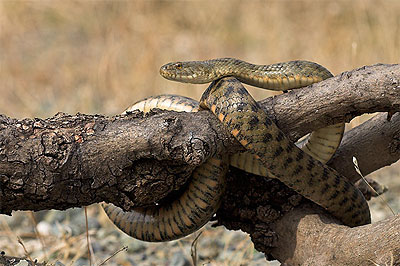
The dice snake is a close relative of the British grass snake (Natrix natrix) and is similar in its habits. It spends much of its time hunting underwater - fresh or salt, it makes no difference. As might be guessed, the main diet of this snake is fish, though it will also take other prey such as frogs and toads.
If disturbed, the dice snake can emit a fluid with a nauseating smell - quite enough to deter most unwelcome attention!
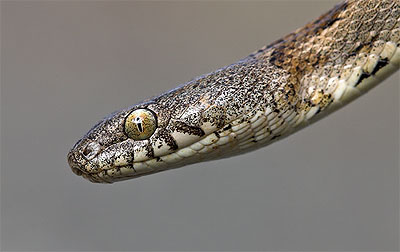
The cat snake is the only one on Crete with any venom whatsoever, but its tiny fangs are at the rear of its mouth and it is considered to be harmless because of this. This snake is a specialist which dines almost exclusively on lizards and the venom is used to quieten them down before they are swallowed.
The cat snake also differs from the other Cretan snakes in that it hunts at night, when the lizards are sleepy and slow. This makes it without a doubt the most difficult local snake to come across.
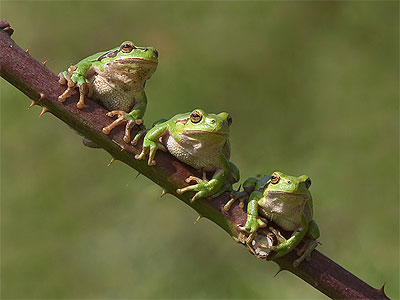
These delightful little tree frogs are quite plentiful on Crete and can be seen beside pools and other fresh water sources by the thousand in the spring.
As part of their defence strategy, they can change colour through quite a range. Sometimes they take on such a shiny appearance that visitors to Aquaworld mistake them for plastic replicas!
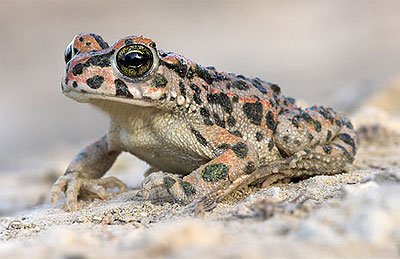
The green toad looks like it has been kitted out with military disruptive pattern camouflage. It can be found sheltering under logs and rocks all year long - it only takes a little rain to bring it out. During spring evenings, its call takes on an eerie tone and it can be quite unnerving.
Some biologists consider the DNA of the Cretan green toad to be sufficiently different to that of mainland toads that it should be considered a distinct sub-species in its own right.
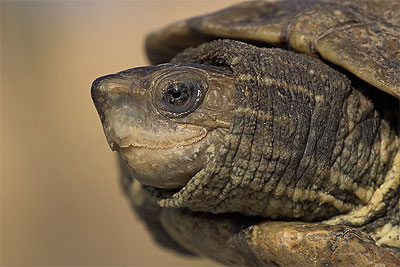
It seems that wherever there is fresh or brackish water on Crete, there too will be Balkan terrapins. These creatures love to bask in the sun on the banks of their chosen homes - but will disappear underwater with a loud 'plop' when approached.
Crete is warm enough for them to remain active all year round, though they may bury themselves in the mud and sleep their way through long periods of summer drought if necessary.
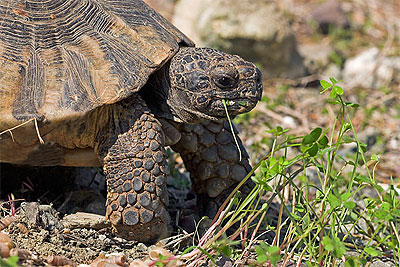
Adam is a slightly mad, one-eyed marginated tortoise who delights in chasing people around the garden and giving their feet or handbags little love bites. He was given to Aquaworld some years ago as an unwanted pet - one can sometimes see why!
Although officially, modern tortoises are not native to Crete, more and more seem to be turning up every year. This leads us to suspect that escaped pets have established themselves in this ideal terrain.
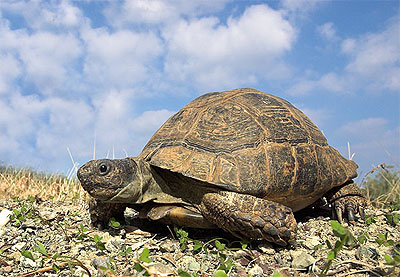
Elle is a quiet female spur-thighed tortoise who spends her summer times in the gardens at Aquaworld along with about ten other assorted tortoises.
She was originally known as El Greco (being a Greek spur-thigh), but when she laid an egg one day her name just had to change and Elle seemed the easiest way to go without confusing her!
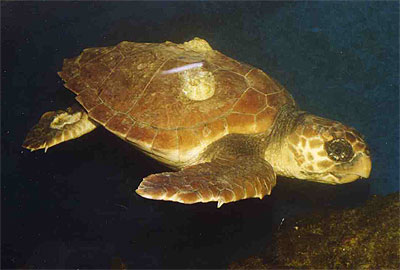
Miss Calypso is, we are pleased to say, no longer to be seen at Aquaworld. This young loggerhead turtle was trapped in a fishing net and badly wounded by the nylon lines as she struggled to escape. Luckily, she did not drown. After 24 hours with us, she was flown to the Sea Turtle Protection Society of Greece's rescue centre outside Athens where she made a full recovery and was subsequently released.
We at Aquaworld do not believe that healthy sea turtles should be kept in captivity - each and every one is vital to the survival of these ancient species.
Aquaworld - Crete's First Aquarium - Hersonissos |
Copyright © Aquaworld 1995-2006
|
|
| If you liked this site and found it useful, please click on the button
above and then "Enter" to vote for it. Thanks! |